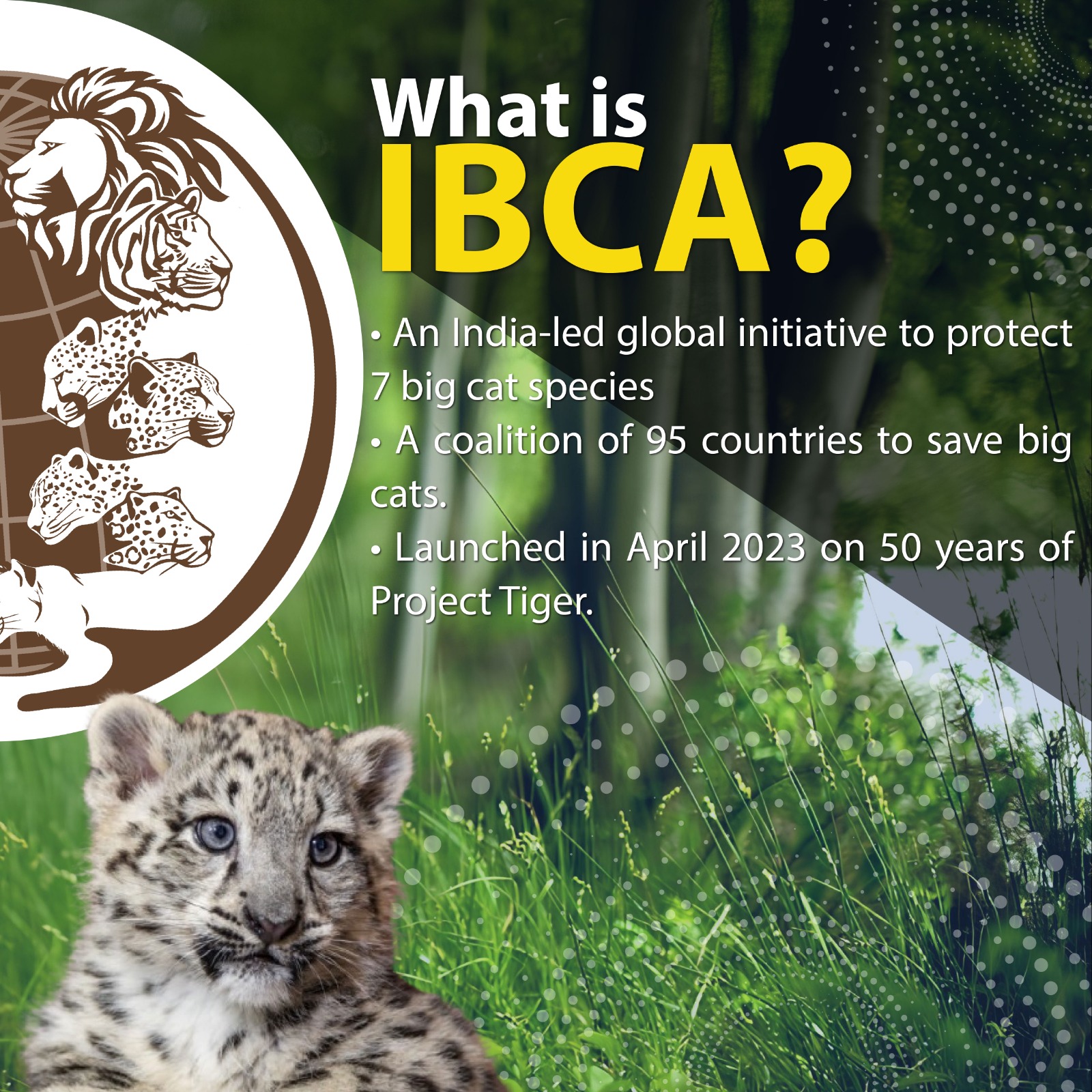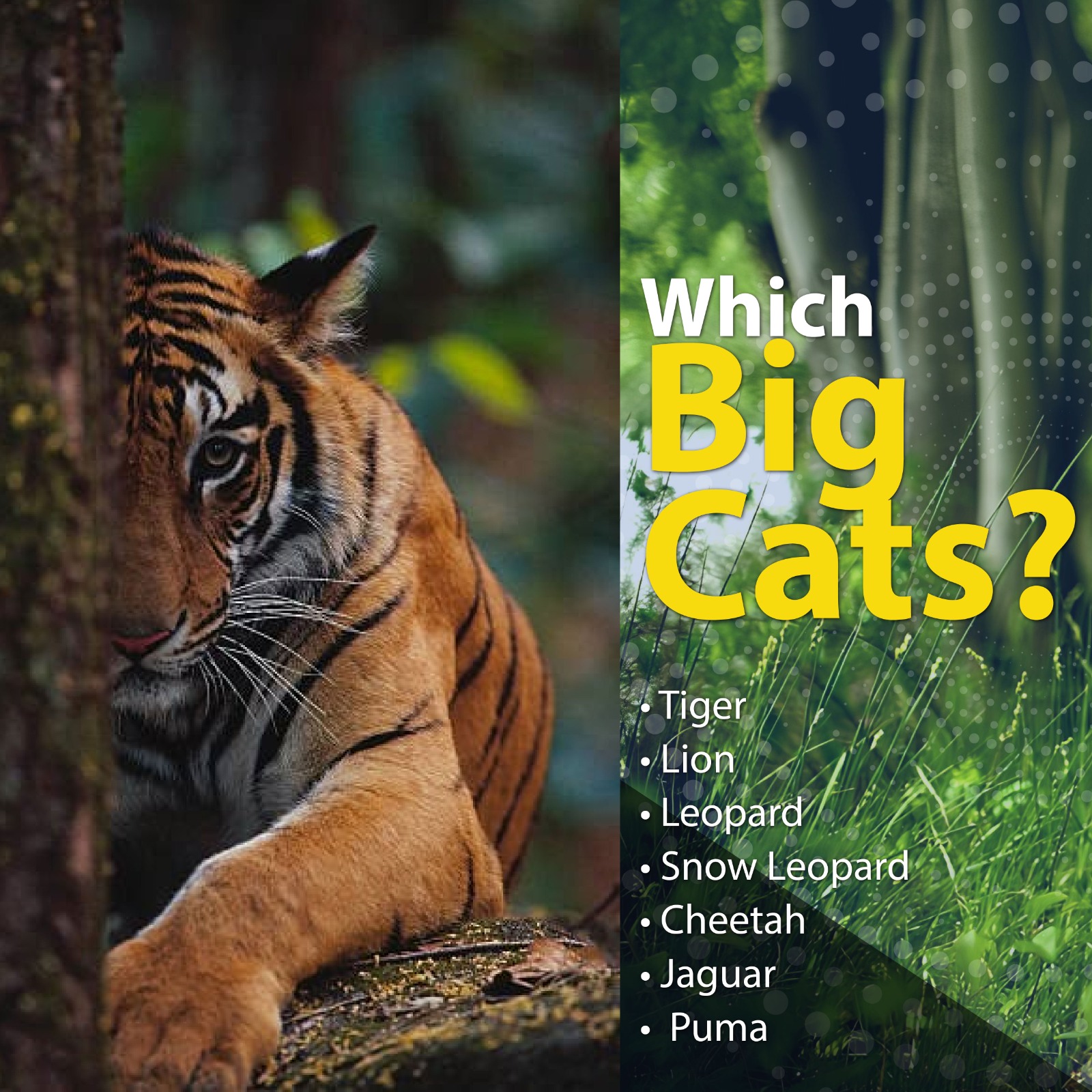Context:
On August 24, 2025, Nepal formally joined the International Big Cat Alliance (IBCA) by signing its Framework Agreement. This makes Nepal a part of a global coalition initiated by India to ensure the conservation of seven species of big cats across their natural ranges.
Why is Nepal’s Membership Important?
- Nepal hosts three of the seven big cats: Tiger, Snow Leopard, and Common Leopard.
- Its landscapes — from the Terai to the Himalayas — are critical habitats for these species.
- Nepal is recognized for successful transboundary conservation initiatives, particularly for tigers.
What is the International Big Cat Alliance?
- The IBCA was launched by Prime Minister Narendra Modi on April 9, 2023, during an event commemorating the 50th anniversary of Project Tiger.
- The initiative’s main objective is the conservation of seven major big cat species: the Tiger, Lion, Leopard, Snow Leopard, Cheetah, Jaguar, and Puma.
- In a cabinet meeting on February 29 , 2024, the government officially approved the establishment of the IBCA, with its headquarters based in India.
- The establishment of the IBCA was spearheaded by the National Tiger Conservation Authority (NTCA), a nodal organization under the Ministry of Environment, Forest & Climate Change (MoEFCC).
- Its mission is to facilitate international collaboration and synergy in conservation efforts, consolidating successful practices and expertise for the global protection of big cats.
- The membership of the IBCA is open to all UN member countries, especially those that host these species, and to non-range countries that are interested in supporting big cat conservation efforts.
- As of August 25, 2025, Nepal is the latest country to join the International Big Cat Alliance (IBCA), bringing the total number of countries with consented membership to 35, with 12 having signed the Framework Agreement.
Big Cats under Protection & Their Conservation Status
|
Big Cat Species |
Scientific Name |
IUCN Status |
CITES Status |
Wildlife Protection Act, 1972 (India) |
|
Tiger |
Panthera tigris |
Endangered |
Appendix I |
Schedule 1 |
|
Asiatic Lion |
Panthera Leo persica |
Endangered |
Appendix I |
Schedule 1 |
|
Leopard |
Panthera pardus |
Vulnerable |
Appendix I |
Schedule 1 |
|
Snow Leopard |
Panthera uncia |
Vulnerable |
Appendix I |
Schedule 1 |
|
Cheetah |
Acinonyx jubatus |
Vulnerable |
Appendix I |
Schedule 1 |
|
Jaguar |
Panthera onca |
Near Threatened |
Appendix I |
Not found in India |
|
Puma |
Puma concolor |
Least Concern |
Appendix I |
Not found in In |
Conclusion:
Nepal’s inclusion in the International Big Cat Alliance marks a significant step in strengthening regional and global collaboration on big cat conservation. It reinforces the vision of ecological security through collective responsibility, and enhances South Asia's role in protecting vulnerable apex predators. With shared landscapes and species, India and Nepal can now deepen transboundary conservation efforts, especially in the face of climate change and habitat loss.








